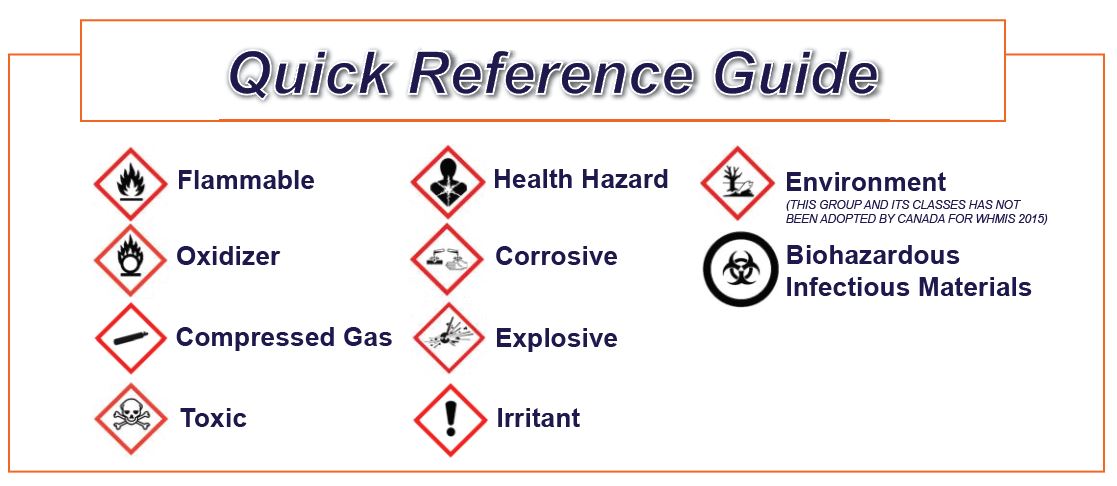Hazard Classes & Pictograms
When a material is listed as a hazardous product, the manufacturer must treat the product according to WHMIS regulations. Part of this regulation is to classify it according to a hazard class.
WHMIS 2015 has many hazard classes. The class describes the different types of hazards. For example, Flammable Solids is a hazard class. Each hazard class is further split into categories or subcategories (Types A, B, C, D, E and F). For example, Category 1 is always more hazardous than Category 2 or 3.

The hazard class and category are a guide to the:
- Type of hazard
- Degree of hazard
- Precautions to follow
The hazard pictogram that appears on the supplier label and SDS is very important. It provides you with information about the primary hazard posed by a product. It also indicates whether the product is dangerous to touch or breathe, is easily combustible, unstable or reacts negatively (when mixed) with other materials. Look for a pictogram that is framed by a red square set on a point. The exception is the biohazard pictogram which is in a round black border.
Ready to get started?
Ask us about our Mandatory Compliance Training bundle
- 1 (888) 552-1155
- sales@hrproactive.com
